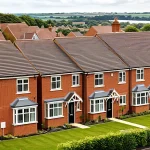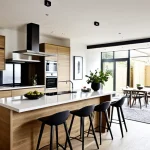Impact of Evolving UK Home Living Trends on Interior Design
Recent UK home living trends strongly influence how interior design adapts to changing lifestyle needs. The shift towards multifunctional spaces reflects growing demand for versatility in residential areas. For example, rooms now often serve dual purposes—living areas double as workspaces, reflecting the integration of work and home life. This trend pushes designers to develop layouts that prioritize flexibility and comfort simultaneously.
According to UK interior statistics, there’s a notable increase in open-plan living, encouraging fluid movement and fostering social interaction. Designers respond by selecting furniture and decor that support both relaxation and functionality, emphasizing clean lines and adaptable setups. Shifting lifestyle priorities, such as an emphasis on wellness and sustainability, impact material choices and spatial organisation.
In the same genre : What Modern Home Design Trends Are Dominating UK Interiors?
Expert insights highlight increased interest in creating calming environments through natural light and ergonomic elements. The residential space evolution involves smart storage solutions and the incorporation of technology to enhance daily living convenience. Ultimately, design philosophies in the UK continue evolving to accommodate varied lifestyle demands, blending aesthetic appeal with practical use tailored to contemporary home needs.
Sustainability and Eco-Friendly Design Adaptations
Sustainable UK interiors increasingly influence eco-friendly home trends, driven by a growing awareness of environmental impact. Key green design adaptations prioritise materials sourced responsibly and low-impact production processes. Popular sustainable materials include reclaimed wood, bamboo, cork, and recycled metals, which provide durability without sacrificing style. UK homeowners often opt for natural fibres like organic cotton and wool for upholstery and soft furnishings.
This might interest you : How Can You Infuse Comfort and Style into Your UK Home Living Spaces?
Real-life case studies illustrate successful eco-conscious renovations. One example involves replacing traditional flooring with reclaimed wood from local sources, enhancing character while reducing waste. Another highlights the use of energy-efficient lighting and smart thermostats to minimise carbon footprints, supporting both practicality and sustainability.
Integrating sustainability need not mean compromising aesthetics.
Here are strategic tips for creating a stylish, eco-friendly home:
- Use durable, timeless materials that age well to reduce frequent replacements.
- Incorporate plants and natural light to encourage healthier indoor environments.
- Choose multifunctional furniture made from recycled or sustainably harvested materials.
By embracing these sustainable UK interiors strategies, homeowners contribute positively to environmental goals while elevating their living spaces with purposeful design choices.





